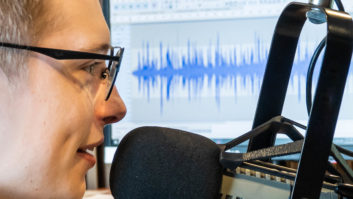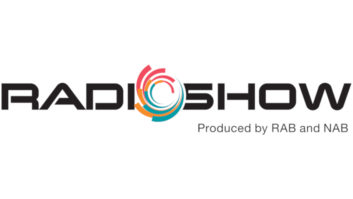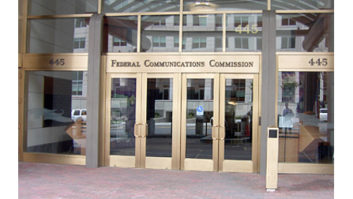
Ronald Gordon is the chairman and CEO of ZGS Communications, which owned AM stations in Tampa, Fla., and Laurel, Md. In 2017, the company sold all of its AM stations to minority owner/operators.
Glenn Cherry is the chairman and CEO of Redemption Strategies Broadcasting, which owns AM stations in Greenville, S.C., and Daytona Beach, Fla.
Lately there’s been a big push in our industry to get the FCC to endorse ownership deregulation. But if Radio World gave most broadcasters a quiz on what “deregulation” really means, lots of us broadcasters would flunk.
So let’s unpack this term.
When most of us think of “deregulation,” we think of “getting rid of the ‘eight station rule.’” More precisely, this means relaxing or throwing away the FCC’s limits on the number of radio stations a company can control in a local market. In a 45-voice market, that’s eight stations (the “cap”), no more than five of which can be FMs or AMs (that’s the “sub-cap”).

This type of deregulation is what antitrust lawyers call “horizontal:” The ability to own a lot more of the same kind of assets. But there are two other types of deregulation. What are they?
One type is “vertical” deregulation. That’s liberating radio to own assets in other industries, like television or daily newspapers in the same markets.
And the other type is “engineering deregulation.” We’re not talking about rules that protect signal quality — no one wants to get rid of those. We’re talking about rules that depress power levels unnecessarily. Rules that haven’t kept pace with receiver improvements. Or with changing demographics, like the growth of ethnic and language minorities in need of radio service.
So let’s think about these three kinds of deregulation — horizontal, vertical, and engineering — one at a time. Which ones are good for radio?
HORIZONTAL DEREGULATION
First, let’s consider horizontal deregulation — the ownership caps and subcaps.
Recently, a majority faction of the NAB board voted to ask the FCC to raise the caps and subcaps, on the theory that this would help our industry compete with the Googles, Facebooks and the other high tech giants/monopolies.
That would be a mistake. If duopolies — horizontal deregulation in television — should have taught us anything, it’s that horizontal deregulation destroys competition and diversity of voices, and limits opportunity for small businesses and minority and women ownership.
In radio, getting rid of the caps and the FM subcap would drive out the “mom and pop” owner/operators who are the lifeblood of our industry. The minorities and women who broadcast to those hungriest for radio. The foreign language and religious broadcasters. The AM specialists we rely on for local news and information, especially during storms. The folk who embody hyper-local service: our industry’s strongest response as we compete against newer, globally programmed, flavor-of-the-day technologies.
Both of us are lifetime minority broadcasters and AM specialists, and we would want to see the next generation follow behind us — to have the opportunity to get into the industry and prove their mettle.
Horizontal deregulation — greater FM ownership — would make that dream all but impossible. It would do that by eviscerating AM stations’ asset value and marketability, and even repair-ability. And this at a time when access to capital for small and minority broadcasters is at its lowest ebb in years: no tax certificate, no incubator program, no functional distress sale policy anymore. Minority ownership now stands at a shameful 1 percent of industry asset value.
Think about it: 38 percent of our nation is comprised of people of color — yet the National Association of Broadcasters board’s proposal barely pays lip-service to how its deregulation plan would affect these communities and their ability to participate in the economics of the public airwaves. In fact, the board’s anemic incubator proposal completely dis-incentivizes incubation opportunities in the vast majority of markets. When added to the proposal’s evisceration of the values — and potentially the viability — of AM stations, and its proposed FM consolidation, it’s easy to see how the NAB board proposal would dramatically accelerate the already dismal, downward spiraling of broadcast ownership by small operators and people of color.
The NAB board has no qualms with horizontal ownership deregulation, even if it drives out minorities from local radio. They rest their case on the argument that it’s needed to help radio fight the tech titans.
How would buying an additional four or five radio stations in a market allow a broadcaster to take on Google or Facebook? Individually, these big tech companies dwarf the annual revenues of the entire radio industry combined. How exactly would gutting the radio ownership rules drive advertising money away from tech and into radio’s pocket? To the advertiser, what difference does it make who owns the station? Horizontal deregulation just shuffles the deck in favor of the big guys; it does nothing to improve radio’s ability to compete with big tech.
This doesn’t mean that there is no deregulation that can help the industry. Just not horizontal consolidation.
VERTICAL DEREGULATION
Vertical deregulation might be a good thing. Done thoughtfully, it could help consumers, help the industry, and not harm diversity of voices and ownership.
For example, the radio-TV cross-ownership rule and the radio-newspaper cross-ownership rule are probably gone, subject only to an appeal in the Third Circuit. Few will notice.
ENGINEERING DEREGULATION
Finally, thoughtful, careful engineering deregulation could improve our coverage without degrading each others’ signals.
The FCC can facilitate move-ins by getting rid of the rural radio rule. It can adopt geo-targeting, which allows a station to broadcast different program streams directionally from the same antenna, thus allowing a station to serve different audiences. It is already considering the Wesolowski-MMTC “C4 Petition,” which would allow hundreds of Class A FMs to double their power. And, perhaps, it should consider allowing translators to originate programming. Also, if AM-associated translators were allowed to have HD channels, they could broadcast multiple channels like other FM stations are capable of doing.
These are the kinds of creative solutions we need to be thinking about that could really rejuvenate our industry and give it more listenable, competitive signals to serve the racially and language-diverse populations that are hungry for radio.












